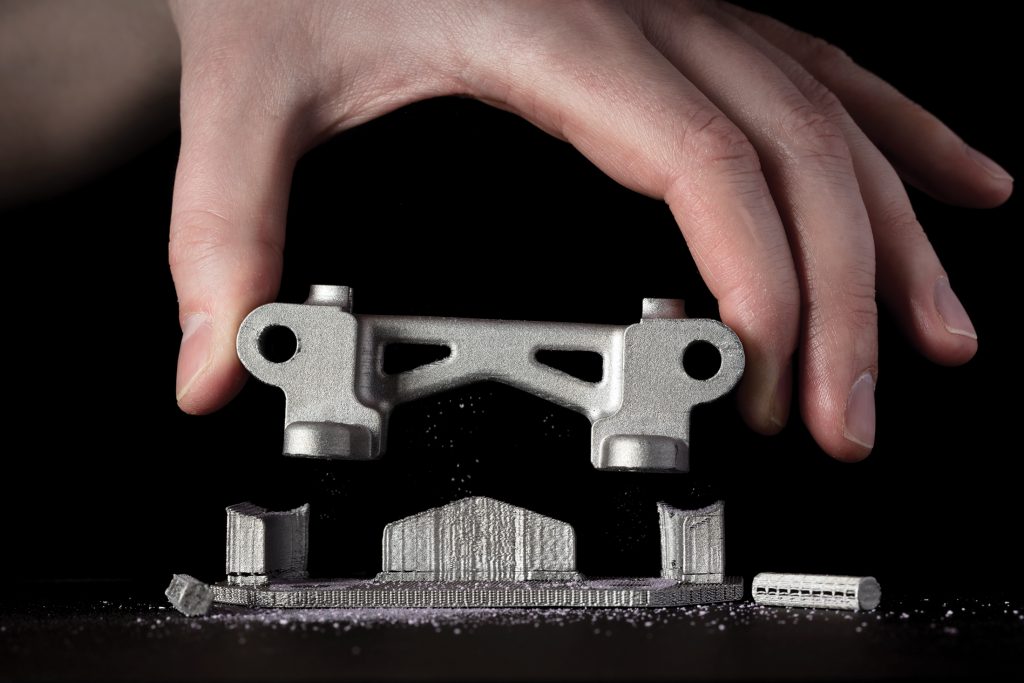3D printing patents studied by a leading intellectual property expert give useful insights into 3D printing trends.
IFI CLAIMS Patent Services has published a new report showing the enterprises, technologies and countries with the most patents. For 2017, over 320,000 patents were granted – an increase of 5.2% on the previous year and a new record.
I caught up with Larry Cady, senior analyst, IFI CLAIMS Patent Services, to learn more about trends in 3D printing patents.
The 3D printing industry is, “Vibrant and growing fast” Cady tells me. “We note that additive manufacturing is being heavily used at companies like Boeing and General Electric. Combined with some new advanced materials, it may have a big impact on manufacturing,” he adds.

The IFI Claims report shows that the 5 year growth rate for published patent applications in the Patent Classification B33Y Additive Manufacturing grew at a compound annual rate of 35% from 2013 to 2017.
The only technology with a higher 5 year growth rate was e-Cigarettes at 45%. Machine Learning took third place at 34%, Autonomous Vehicles had a 27% CAGR, Moulding Materials 27%, Hybrid Vehicles 26%, Aerial Drones also 26% and Food at 24% was the 8th fastest growing technology by patent.

General Electric received the most 3D printing patents in 2017
The report uses 70 sources of data and looked at the 320,003 Utility Grant patents issued by the USPTO. US enterprises were the recipients of 46% of the patents, 31% went to Asian companies and 15% to European business.
While Chinese companies received only 3.5% of the 2017 US Grants, this is a 28% increase on the prior year. “Among countries receiving US patents, the ranking is (1) US, (2) Japan, (3) Korea, (4) Germany, (5) China,” says Cady, “China has replaced Taiwan, which was number 5 in 2016.”
The enterprises with the greatest number of 3D Printing and additive manufacturing 2017 published patents applications for 2017 are listed in the report as follows:
General Electric 89
Xerox 78
Boeing 50
Desktop Metal 48
Hewlett-Packard Development 48
Ricoh Co 45
Stratasys 40
Some of the patents included in this data are additive manufacturing acoustic monitoring processes from GE, separable supports from Desktop Metal, Rocket Crafters 3D printed rocket fuel, and patents for Stratasys subsidiary Evolve Additive’s new 3D printing technology.
Interestingly, of the top 7 companies named as most active in 3D printing patents, Desktop Metal and Stratasys are the only “pure” 3D printing enterprises.

I asked Larry Cady from IFI CLAIMS Patent Services about the relationship between patents and innovation. “If you look at the companies with the most patents you do see some of the world’s great innovators. Certainly there is a relationship but obviously not every patent represents an innovation. Many are quite mundane and don’t even have a clear application,” Cady explained.
Indeed, more patents does not always indicate more innovation – or the relentless march of progress. A report from the US Congressional Budget Office lists “low-quality patents” patent litigation and an increasing number of patent trolls as ways the US patent system can harm innovation. I interviewed several legal experts in 3D printing for this article looking at 3D printing, patents and innovation.
A new wave of 3D printing products
That said, should the 3D printing industry expect the 35% CAGR to translate into a wave of new products anytime soon? “Most patents take 2-3 years from application to grant and from there it depends— some may take years to be applied to a product,” explains Cady.
“Pendency refers to the length of time between a patent filing and its issue as a patent grant.” In the US mean patent pendency is 3.20 years, the number for China is 3.09. Korea has the lowest mean patent pendency at 2.78 years and the longest time to grant is seen at the European Patent Office with 5.87 years.
Cady adds, “Of course, a company can start using an innovation as soon as they invent it and they don’t have to wait for a patent grant. However, if they want patent protection in a specific market (like the US), then they need to let the patent grant.”
“Pendency is easy to measure, but the time between invention and product is not something we can estimate. It certainly depends on the industry and the company. In 3D Printing, it may be fairly short.”
I asked the senior analyst if the 2017 data revealed any surprises – 3D printing related, or otherwise. Cady tells me there was a, “Significant drop this year from ever strong Japanese companies. Canon, Sony, Brother, Sharp, Ricoh, and Toshiba all saw dips in patents and/or rank.”
Elsewhere there was, “A big comeback, however, for automakers, led by Toyota and Ford.” This increase was driven by activity in self-driving cars, but also in advanced manufacturing. Cady says that, “Facebook enters Top 50 on their strength in Machine Learning. The rise of Chinese companies like BOE Technology Group and Shenzhen China Star.”
More information about the 2017 Patent Trends and Insights from IFI CLAIMS Patent Services is available online.
Nominations for the second annual 3D Printing Industry Awards are now open. Make your selections now.
For more analysis and insight into the additive manufacturing sector, subscribe to our free 3D Printing Industry newsletter, follow us on Twitter, and like us on Facebook.
Featured image shows a drawing from Scott Crump’s patent US5121329-1.


